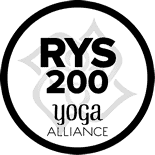Last updated on January 28th, 2023 at 03:01 pm
The Career-Enhancing Benefits of Breathwork Facilitator Training
Can you take pranayama further than just your yoga classes? How can you further integrate breathwork into the lives of your clients? The answer may be in diving further into the subject.
Breathwork is a powerful tool that can enhance your students’ experience and practice. It can help them connect with their inner selves and access emotions they may not have been aware of before.
Breathwork facilitator training can be life-changing for you and your students. You will learn how to guide people through breathwork sessions and help them achieve greater self-awareness and peace of mind.
Keep reading to learn more about the benefits of breathwork and what you already know about pranayama.
What Is Breathwork?
Breathwork is an ancient practice that has been around for centuries. The breath is a powerful tool that can improve our physical, mental, and emotional health.
When we breathe correctly, it can help to improve our circulation, increase our energy levels, and reduce stress and anxiety. Breathwork can also help to improve our cognitive function and memory.
Breathwork classes and breathwork training can help us learn how to breathe correctly. We can learn to use our breath to improve our health and wellbeing.

Breathwork vs. Pranayama
You should already be familiar with the concept of pranayama from your initial 200-hour yoga teacher training. Pranayama is the Sanskrit word that means “extension of breath” or “life force extension.”
Pranayama is an umbrella term that breathwork falls under. Both words refer to the practice of controlling the breath. So all pranayama is breathwork, but not all breathwork is pranayama.
What Makes Breathwork Different From Pranayama?
The main difference between breathwork and pranayama is the intention behind the practice. Breathwork focuses more on the breath itself and the physical, mental, and emotional benefits of breath control.
Pranayama is more focused on the energy generated by the breath. In pranayama, the breath is used to help balance the energy in the body and improve our health and well-being.
Breathwork is perhaps more palatable for a Western audience who may not be interested in the Sanskrit origins or energy balance applications of pranayama.

The Importance of Breathwork
In the Western world, your clients are most likely to be familiar with breath control as a tool for relaxation.
But breathwork is a powerful tool that can help to improve your health and well-being. They might not be aware of the breath’s potential to enhance physical, mental, and emotional well-being.
The benefits of breathwork are far-reaching. It can reduce stress, improve sleep, boost energy levels, detoxify the body, and promote relaxation. Breathwork is also an effective way to overcome anxiety and depression.
Types of Breathwork
As a breathwork facilitator, you’ll need to be familiar with the different types of breathwork to choose the right one for your clients. Some of the most popular types of breathwork include the following:
Pranayama
Pranayama’s breathing involves inhaling deeply through the nose and exhaling slowly through the mouth.
This type of breathing helps oxygenate the blood and slows down the heart rate. It is an excellent way to calm the nervous system and reduce stress levels.
Circular Breathing
Circular breathing is often used in yoga and meditation. It involves breathing in through the nose and out through the mouth. According to yogic tradition, circular breathing is to purify and cleanse the body.
Ujjayi Breath
Ujjayi breath involves breathing in through the nose and out through the mouth, with the breath being slightly constricted in the throat. This type of yogic breathing is slow and calming, with the breath being constricted somewhat in the throat to create an internal ocean sound.
Ujjayi creates a rhythmic breath pattern during asanas that can help focus and calm the mind.
Breath of Fire
Breath of fire is often used in yoga. It involves breathing in and out through the nose at a rapid pace. It can help clear toxins from the body, improve circulation, and help to oxygenate the blood. Some people use breath of fire as a tool for self-transformation and the rise of Kundalini energy.
Holotropic Breathwork
Holotropic breathwork is often used in shamanic healing. It involves breathing in and out through the mouth at a rapid pace.
Holotropic breathwork is used as a tool for personal growth and self-discovery. It can help people access hidden parts of themselves and explore their inner worlds in a safe and supportive setting.
It can release emotional blocks and trauma stored in the body, leading to improved physical health and well-being.

Proven Benefits of Breathwork
Research has shown that breathwork can have a positive impact on our physical, mental, and emotional health. Now that you know a little more about breathwork, let’s look at some of the proven benefits of this practice.
Reduced Stress and Anxiety
One of the most well-known benefits of breathwork is its ability to reduce stress and anxiety. Numerous studies have shown that breathwork can be an effective tool for managing stress and anxiety.
Improved Sleep Quality
Breathwork can improve sleep quality by increasing feelings of well-being and calmness. Breathwork regulates the autonomic nervous system to relax the body and mind, making it easier to fall asleep.
Many people hold tension in their muscles, making it difficult to relax and fall asleep. Breathwork helps to release this tension and allows the body to relax more deeply.
Increased Energy Levels
Breathwork helps clear out the lungs, sinuses, and entire respiratory tract. It also helps to oxygenate the blood, which can boost energy levels. Breathwork also helps to release emotional blockages and stressors that can sap our energy.
Enhanced Concentration and Focus
When you’re more aware of your breath, you’re more likely to be more alert and focused. This is because the breath is a natural relaxant, so you naturally become more relaxed and less tense when you concentrate on it.
Improved Cardiovascular Health
Breathing exercises synchronize the right and left hemispheres of the brain, which can help to harmonize the autonomic nervous system. This helps regulate heart rate and blood pressure. Studies show that breathwork can lower blood pressure and improve heart rate variability.
Breathwork can also help decrease stress and anxiety levels, known risk factors for heart disease. And finally, breathwork helps to increase circulation and oxygenation of the blood, which can be beneficial for overall cardiovascular health.
Decreased Inflammation
Inflammation is a significant contributor to many chronic diseases. Fortunately, breathwork can help to reduce inflammation. Studies have shown that breathwork can help to reduce inflammation markers.
The Science Behind the Practice
Why does breathwork have such significant effects on our health?
The answer lies in the fact that breathwork activates the sympathetic nervous system. The sympathetic nervous system is responsible for our “fight or flight” response. When the sympathetic nervous system is activated, it releases stress hormones like adrenaline and cortisol.
These stress hormones have several effects on the body, including:
- Increasing heart rate
- Increasing blood pressure
- Constricting blood vessels
- Increasing respiration
- Increasing blood sugar levels
All of these effects can help to improve our mental and physical performance. However, if the sympathetic nervous system is activated too often, it can lead to chronic stress and health problems.
Breathwork can help to activate the sympathetic nervous system without causing chronic stress. This is because breathwork allows us to control our breath. We can start the sympathetic nervous system without triggering the “fight or flight” response when we hold our breath.
Who Can Benefit From Breathwork Classes?
Breathwork can be used by people of all ages and fitness levels. It is a safe and natural way to improve mental and physical health.
Breathwork is an excellent practice for people looking for a natural way to improve their health and well-being. It naturally goes very well with yoga and meditation practices.
It is a particularly effective alternative for people who may have difficulties or obstacles that keep them from exercising regularly.
Breathwork is also an excellent tool for people struggling with anxiety, stress, or insomnia. People who suffer from anxiety attacks or panic attacks can use breathwork techniques to calm down and regain control.
The Bottom Line
Breathwork is a powerful tool that can offer a wide range of benefits. If you’re looking for a way to help your clients enhance their health and well-being, breathwork may be the answer.
Breathwork classes make wellness more inclusive for those who have difficulty exercising and can serve as a helpful tool for those suffering from anxiety, stress, or insomnia.
The benefits of breathwork are vast. It can help practitioners create profound change in themselves and those around them.
Take a Course in Breathwork Facilitator Training
Breathwork facilitator training can provide you with the skills and knowledge necessary to help your clients improve their mental and physical health. With the proper training, you can learn how to facilitate safe and transformative breathwork sessions for your students.
Breathwork facilitation training goes hand in hand with yin yoga and meditation. In our breathwork facilitator training program, you’ll learn how to lead breathwork sessions and integrate breathwork into your yin yoga classes.
Our online courses are certified and credited with Yoga Alliance and taught by experienced and knowledgeable yogis. Sign up for your online, self-paced Breathwork Facilitator training and certification today!



